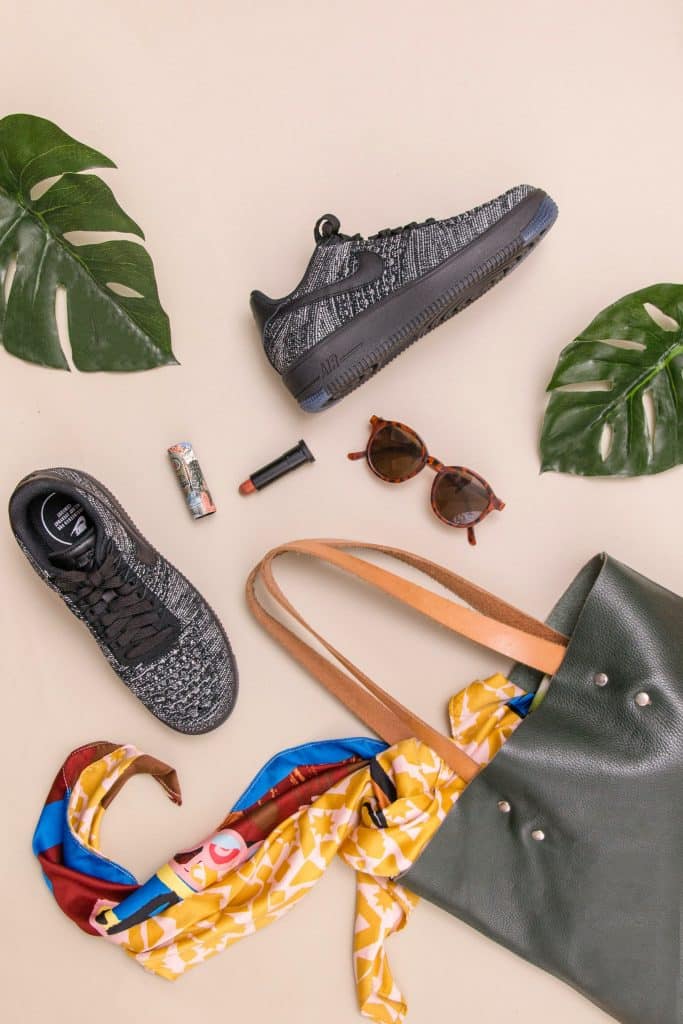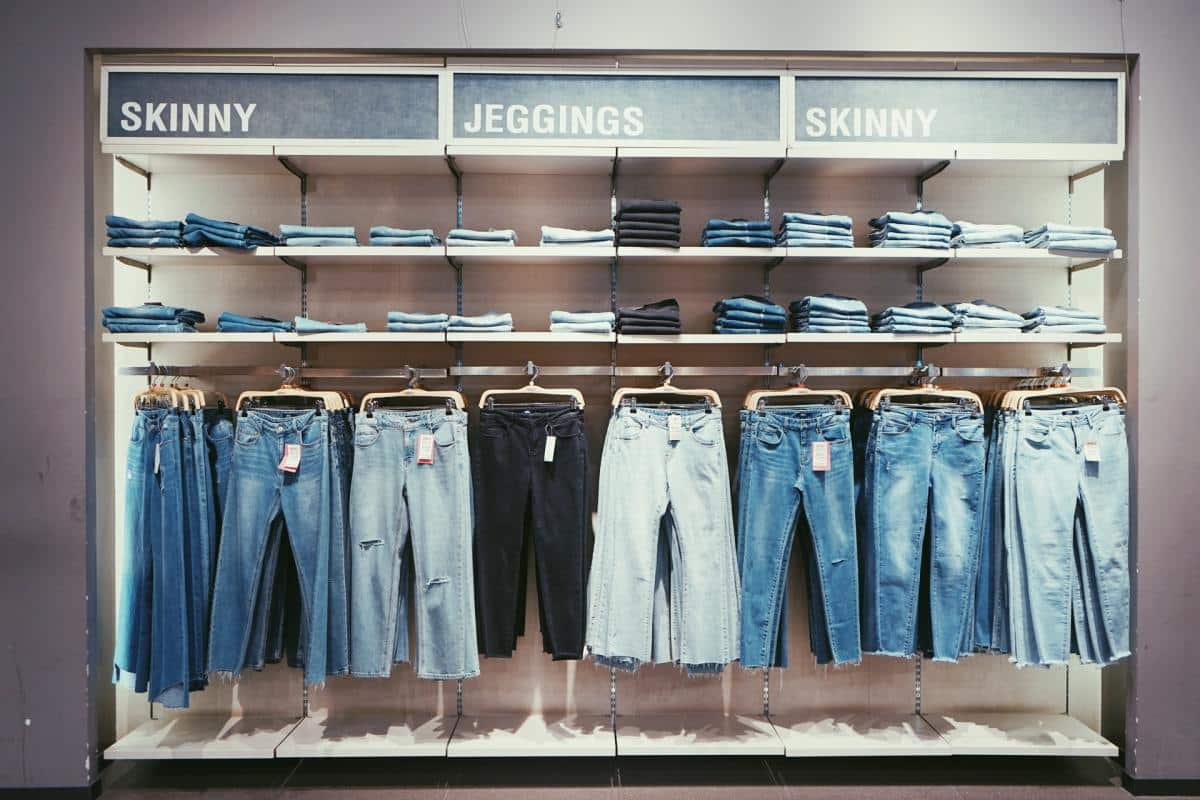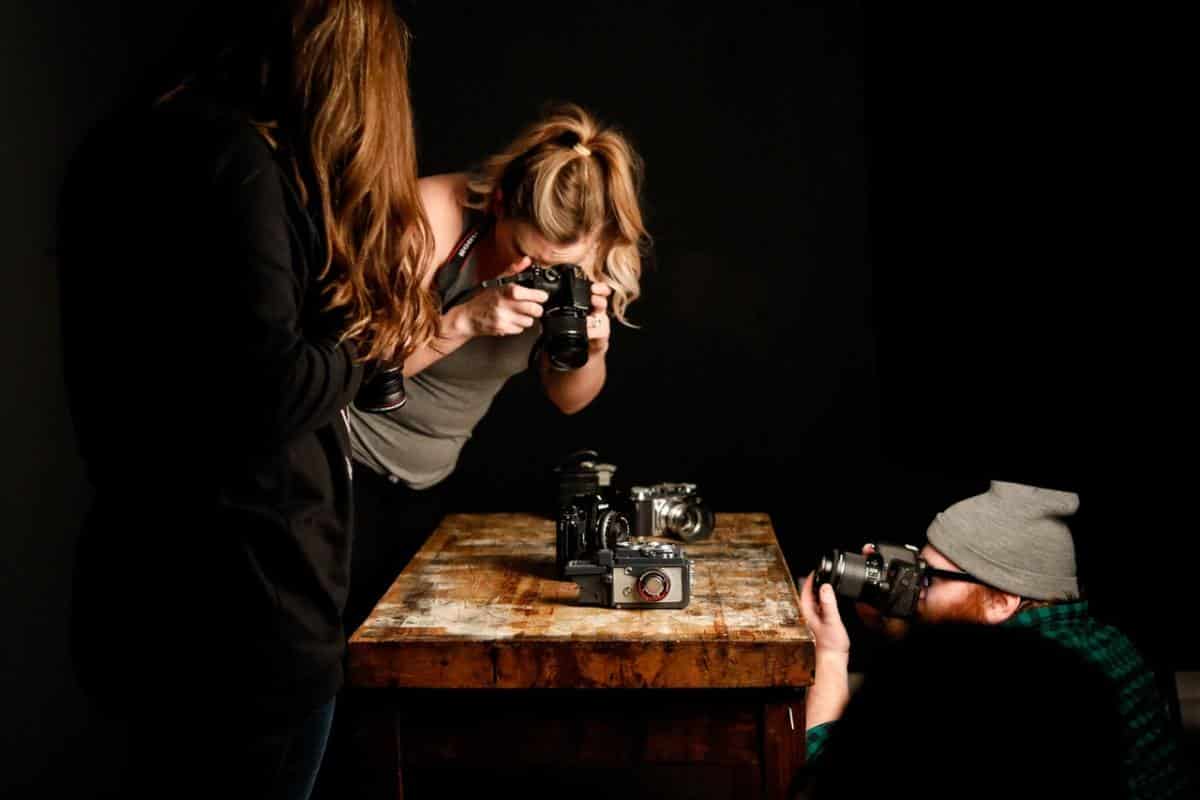Your Complete Guide to Commercial Photography
What Is Commercial Photography?
Commercial photography is photography that is used to sell or promote a product or service, or otherwise support a business or organization in making more money, which can refer to product photography, lifestyle photography, and even fashion photography, depending on the client and the product or service being sold.

If you’re serious about a career as a photographer, you’ve probably spent some time building an online portfolio and considering the different types of photography you can specialize in. One of the best parts of working as a photographer is that there are so many different fields you can try out depending on your skills, interests, and personality. For example, nature loving introverts might gravitate towards landscape and nature photography, while crowd loving extroverts might be more drawn to wedding photography or event photography.
A popular and often well-compensated type of photography you can choose to pursue is commercial photography. If you’re not sure if this is the right specialty for you, by the end of this article you’ll have all your most burning questions answered about what’s involved in building a commercial photography portfolio.
What Is Commercial Photography?
If you’re scratching your head about what commercial photography is exactly, you’re not alone. The term can cover quite a wide range of images. Broadly, commercial photography refers to photography that is used to sell or promote a product or service, or otherwise support a business or organization in making more money.
Often, this can refer to product photography, lifestyle photography, and even fashion photography. However, depending on the client and the product or service being sold, it can also include things like architectural photography, food photography, and events.
Nowadays, since so much selling and promotion of products happens online, commercial photographs may be shot with Instagram in mind. They can also be used on websites, in marketing material, in print or digital ads, on billboards, or anywhere else your client wishes to communicate visually with their customer base.
Since the definition of commercial photography hinges on the end use of the images rather than on the actual content of the photographs, specializing in this field can make for a particularly varied career and wide-ranging portfolio.

What Are the Different Types of Commercial Photography?
Types of commercial photography include product photography, lifestyle photography for brands, photography for use on product packaging, images for brochures, photos for social media use by brands and organizations, fashion photography, portrait photography if it’s for commercial use, real estate and architectural photography, and more.
Clearly, no matter what your interests are, you’ll probably find a niche you love in this photography genre!
What Is the Difference Between Commercial Photography and Advertising Photography?
While there is some overlap between commercial photography and advertising photography, there is a subtle difference implied by the two terms. While commercial photography is more geared towards showcasing a product in the best light possible, advertising shots are more focused on creating an emotional appeal and telling a story about the brand.
What Is a Commercial Photographer?
A commercial photographer is someone who shoots images that help their clients sell their products or services. They may work alone or as part of a team. If working alone, they are often tasked with coming up with concepts that help bring their clients’ vision to life. If working as part of a time, they may have direction from someone like an art director who has already conceptualized a photoshoot based on things like the clients branding strategy and target audience, and the photographer’s job is to create images based on this direction.
How Much Do Commercial Photographers Make?
As you might suspect from the broad range of niches available to commercial photographers, the amount that can be charged for a commercial gig can also vary. The good news is that commercial clients typically have a budget dedicated to creating content for their marketing, sales, and advertising activities. This makes commercial photography a wise choice if you want to be able to regularly work with high-paying clients, which isn’t always possible in other photography fields.
The potential salary for a commercial photographer will also vary depending on their geographical region. For example, the average annual income for a commercial photographer in the United States is $52,000, but a photographer in a major city with lots of commercial clients available and a higher cost of living will likely out-earn a photographer in a smaller city.
You can search commercial photography salaries in your area to get a better idea of the realistic range in your region, but remember that a good commercial photographer can also have opportunities to travel to different destinations to capture images for their clients.
Depending on the type of commercial photography, you may even be able to pursue high-paying clients that are far away if the images they need don’t necessarily have to be taken locally. For example, a product photographer can have products sent to their studio without needing to travel.
How Should I Price My Commercial Photography?
Once you have an idea of the average rates in your area, you’re in a better position to know how much to charge. The line items on your invoices should include:
Your hourly or day rate
Equipment rental (include this even for camera gear you own)
Assistant fees, if relevant
Prop or location rental, if relevant
Licensing fees, per image
Post-production fee, per image
Breaking down your final rate in this way helps your clients see exactly how you arrived at your final price and helps them see that it is fair based on the work, experience, and equipment involved.

Ready to get started?
Create your commercial photography online portfolio website now.
What Is Commercial Use of a Photo?
Commercial use of an image entails use in advertising or otherwise promoting and selling a product or service. For each image you deliver, you can specify the usage limitations through a usage license. When licensing your photos, you typically include a licensing fee. Often, clients can expand their license to different uses or for longer use periods by paying a larger fee.
What Does a Commercial Photographer Do, Exactly?
While the day-to-day schedule of a commercial photographer will vary depending on their niche and the industries they work in, there are a number of things you can expect to do regularly no matter what kind of clients you work with. These include:
Pitching Client
We’ll get into more detail on how you can land those great commercial clients you dream of, but one thing you’ll surely be doing regularly as a commercial photographer is building a client list. Whether you’re pitching to RFPs or cold-calling businesses you wish to work with, you should expect to spend some time regularly on pitching potential clients.
Ask Lots of Questions
The better you understand your client, their products, and their goals, the more success you will have as a commercial photographer. Once you’ve landed that client, take the time to get a clear vision of what their goal is for their commercial images. You might want to come up with a questionnaire that you send to your clients at the start of every project. It should include things like where the photos will be used, some reference or inspiration photos the client likes, what their goal is for the campaign or project the images will be used for, what response they want viewers to have to the photos, and other clarifying questions like these.
Coming up with Concepts
While you may sometimes be given clear and detailed creative direction from your client, you’ll often be the creative brains behind your commercial work. For example, if your specialty is food photography and a new restaurant approaches you to shoot images for an upcoming campaign, you might be responsible for coming up with the mood of the photoshoot and a range of visual concepts for the client to choose from.
Taking Photos!
When it comes to creating the best possible photos for your commercial clients, it’s important to always keep in mind that the goal is to sell a product or service. Being very clear on the goals of your client will help guide how you go about your shoot. For example, if your client wants a very polished, high-end look for their product photos, you might spend some time getting the perfect lighting set up in the studio. On the other hand, if they want natural looking lifestyle images for their outdoor apparel brand, you’ll probably be outside trying to catch that perfect golden hour glow.
Post-Production
Again, the amount of time you spend in Photoshop, Lightroom, or your photo editor of choice will depend on the look your client is going for and the final destination of your images. Commercial photos that are destined for Instagram might not require quite as much editing as something that will go to print. Still, since the goal of commercial photography is to make more money for your clients, it’s important for commercial photographers to make sure the final product is polished. This step can be sped up with the use of presets, or you can even make your own that can help you reproduce your signature look again and again. A handy tool for collaborating with clients at this stage is a client proofing gallery. Check if your portfolio website builder has one available, or if you don’t have a portfolio yet, look for this feature when choosing one. It lets you share private galleries with clients where they can make selections and provide comments before you deliver your final images.
Follow up with Clients
This isn’t an absolute must, but if you want to ace your client relations and hopefully land future gigs with existing clients, following up with them sometime after the shoot is a nice touch. You can thank them for working with you, ask how the rollout of your commercial images is going, and let them know you’re available for future gigs.

How Can I Get Started in Commercial Photography?
Even if you’ve never done commercial photography before, there are steps you can take to get your commercial photography business off the ground. The nice thing about this field is that there is room for photographers with a wide range of styles, as long as you can find commercial clients who like the look of your images.
1) Choose your specialization.
As you can tell by now, commercial photography is a broad term that encompasses a ton of different kinds of images. As a general rule, any photography business is better off by having a clear stylistic and thematic focus. In the case of commercial photography, this doesn’t necessarily mean you have to shoot the same thing all the time. However, it does mean you’ll be better off choosing a particular area of commercial photography that you want to focus on. If your dream client is a motorcycle company, you don’t necessarily need to shoot nothing but motorcycles. However, it might make sense to focus on vehicle photography as your specialty, including things like car photography, boats, and even bicycles. By narrowing the scope of your commercial photography, you’ll be perceived as an expert in your area rather than a jack-of-all-trades.
2) Gather your gear.
While it’s always best to start with the equipment you have and slowly add gear as you figure out what you need, there might be some specific pieces of equipment you’ll need in order to create portfolio images you can be proud of. Once you have a camera and some lenses you love, you may want to consider some home studio equipment. If you’re planning on shooting products, a studio strobe might come in very handy. If you’re more likely to be shooting people, investing in a beauty dish and some soft box lights could be a worthy investment as you build your portfolio.
3) Work on your editing skills.
Your commercial clients will sometimes want you to emulate a certain look that they like, and knowing your way around editing software can go a long way in helping you create images that they’ll love. Of course, you’ll learn a lot as you go. Even seasoned pros are constantly learning new tips and tricks, and the software itself is always evolving and becoming more sophisticated. However, having a baseline knowledge from photoshop tutorials or other learning tools will help you create those portfolio images that help you land clients.
4) Create portfolio images.
Now that you know what type of commercial photography you want to specialize in, If you don’t already have a body of commercial work, the next task is to create a collection of portfolio images. The kinds of images you should include in your portfolio will depend on what kind of commercial photograph you intend to specialize in. For example, if you want to specialize in product photography, you can probably create a portfolio on your own by playing around with different sets and lighting setups in your home studio to create images.
If you want to specialize in lifestyle photography or any kind of commercial photography that involves shooting people, there are a few ways you can go about building your portfolio website before you actually have paying customers. You can ask friends and family who are comfortable in front of the camera if they would be willing to model for you, or you can ask local businesses and organizations that are similar to the types of clients you’d ideally like to land if they would be open to you shooting some free commercial images for them.
For example, if you intend to specialize in real estate photography, you could approach a local agency about creating some commercial photographs of their properties free of charge.
While you likely won’t want to offer free shoots later in your career, at the very beginning it can be a good way to build a portfolio that proves to your target client that you are worth hiring for their next shoot.
5) Build an online portfolio
Once you’ve carefully selected your best images that showcase the kind of commercial photography you want to do professionally, it’s time to put them together in an online portfolio.
You might wonder if you can get away with having just an Instagram portfolio, but as important as social media has become, it doesn’t replace a professional online portfolio. Especially when it comes to commercial and advertising photography, clients want to be sure they’re hiring a serious pro for the job.
A beautiful, well-designed portfolio showcases your commercial photography at a high quality that you can’t achieve on Instagram, and it also gives you a chance to tell your clients more about yourself and the kind of work you do. It can give them some pricing information, an overview of your services, and an easy way to get in touch. Overall, a well-designed portfolio website will help you stand out among other commercial photographers and communicates a high level of professionalism that is expected by high-paying clients.
Luckily, don’t have to be a super tech-savvy person to create a gorgeous online portfolio. Look for a website builder that does the heavy lifting for you, so all you have to do is customize it to fit your branding and upload those portfolio images you’ve been working on.
6) Set your rates.
Before you actually start reaching out to clients, it’s a good idea to come up with your rates. It’s normal to have some flexibility based on the client and the scope of the work, but you can come up with some starting point prices based on type of shoot, number of images delivered, licensing, and any other factors you think are important.
Your clients will want to have the information early in the discussion process, so it’s best to be prepared with a price range you’re comfortable with.
7) Get your first clients.
Now that you’ve done all the groundwork to get your commercial photography business off the ground, it’s time to get in front of those clients! This might sound like the scary part, but it’s also exciting. There’s a great feeling that comes along with landing the type of client you’ve been working towards, and getting paid to do something you love doing. Let’s look at some of the ways you can approach getting your first clients.

How Can I Get Commercial Photography Clients?
Once you have some recognizable clients under your belt, you might find you’re more confident approaching businesses to work with you. However, figuring out how to get started before you have the experience can feel daunting. Everyone has to start somewhere, and by putting together a well-curated portfolio website you’ve already taken an important step in landing your first client.
Some steps you can take to land your first clients include:
1) Make a list of potential clients on LinkedIn and connect with them.
Spend some time on LinkedIn looking for the relevant contacts at companies you’d like to work with. Look for people with titles in the marketing department, ideally a marketing director. You can either message them directly introducing yourself and your work and offering them an introductory rate, or you can ask to be included in any future request for proposals (RFPs) they send out to photographers.
2) Put the word out in your social network.
Let friends and family know that you are starting a commercial photography business, and specify your niche. You can create a special introductory rate for anyone they refer to you.
3) Pitch to local businesses.
If there are businesses in your area that you’d like to work with and are not necessarily large enough to have many employees on Linkedin, you can try dropping in and introducing yourself. It’s a good idea to have your portfolio on hand, either professionally printed or on an iPad, to be able to quickly give the person you’re talking to an idea of your work. You can also create a professionally printed mailer that you can send out to businesses, if dropping in isn’t appropriate.
4) Assist another photographer.
If there are other commercial photographers who are further along in their career in your area, you can approach them to see if they need assistance on any future shoot. There’s nothing like being on a real commercial shoot to get a sense of how a good shoot day should go, so if this option is available to you it’s a great way to boost your skills, make connections, and further build out your portfolio.
There you have it — your complete guide to help you get started as a commercial photography business owner! Commercial photographers get to help businesses with photographs that show them in the best possible light, and are important to the marketing efforts of all kinds of organizations. With a bit of camera gear, a killer portfolio, and a list of dream clients, you can go from asking “what is commercial photography” to making money doing it in no time.